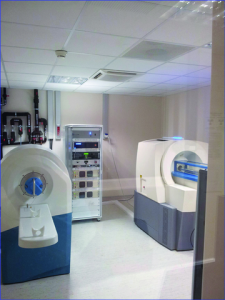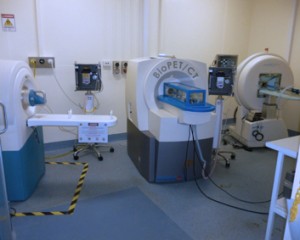Multi-Modal Imaging

Commonly used imaging modalities have varying capabilities based on individual mechanisms of tissue contrast or function, specific sensitivity, spatial and temporal resolution in relationship to diseases, as well as biological processes. Multi-modality imaging with two or more imaging modalities allows integration of the strengths of individual modalities, while overcoming their limitations.
 Technologies
Technologies
Anatomical imaging technologies such as computed tomography (CT) and MRI provide unparalleled structural detail; whereas functional modalities such as positron emission tomography (PET) and single-photon emission CT provide insight into morphological and functional behaviours.
By incorporating anatomical and functional imaging in a common hybrid imaging platform, a synergism in the imaging capabilities can be achieved, thus making it possible to precisely visualize and delineate structural and functional information. Multi-modality imaging thereby ensures better elucidation of physiological mechanisms at molecular and cellular levels.
Therefore, multi-modality imaging has an immensely beneficial role for improved diagnosis and therapeutic planning of a disease. The field of multi-modality imaging has seen rapid progress in the last decade, with its value having been demonstrated in numerous studies.
 Developments
Developments
Recent developments in multi-modal imaging instrumentation such as PET–MRI, SPECT-MRI and PET-CT have paved the way for implementation of multi-modal imaging protocols.
With multi-modality imaging, multiple experimental readouts (anatomy, biodistribution, efficacy, safety and kinetics) are available within the frame of the same study, in the same anatomical context.
References:
http://www.futuremedicine.com/doi/abs/10.4155/ebo.13.186
